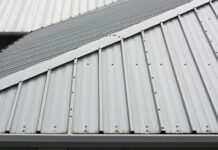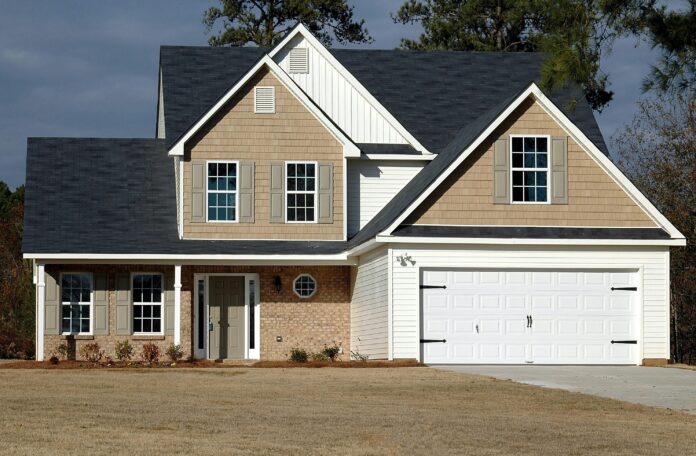Waiting for something to break before addressing it often costs more and takes longer to fix. Many building owners are starting to shift from reactive repairs to planned care. This proactive approach to property helps limit stress, keeps things in working order, and protects your investment. It also helps avoid disruptions in daily routines or business operations. With the right people and a steady approach, it’s easier to stay ahead of wear and tear before it gets out of control.
Here’s how you can get started:
Start with Regular Inspections
One of the most valuable habits you can build is checking the essentials often. Walk around the building and look closely at walls, ceilings, visible wiring, vents, and structural corners. Spotting cracks, rust, mold, or signs of moisture helps you catch problems early. Use your phone to take pictures and create a dated record of what you see. When you repeat this process every few months, it becomes easier to notice what’s changed. This kind of schedule puts you in control, helps prevent damage, and avoids delays when it’s time to call someone in. It’s not just for older buildings. Newer ones benefit from routine walk-throughs too.
Work with Professionals Who Know the Drill
If you want solid results, work with a crew that handles the entire process, from consultation to installation, with no shortcuts. For instance, reputable providers, like KVN Construction, offer full support in siding, roofing, painting, and more. They handle residential and business-level projects with in-depth assessments, and their proactive approach to property focuses on both durability and structure. These teams use top-rated materials like James Hardie siding and Malarkey roofing products, backed by certified technicians and clear timelines. Their services are ideal for people who want a consistent partner instead of coordinating with multiple vendors.
Know Your Property’s Age and Weak Spots
Every building has its own wear pattern based on materials, structure type, and local climate. Older places often have aging insulation, faded paint, and weak spots around entry points. Even newer structures can develop issues if rushed during construction or exposed to harsh weather. Start by reviewing past repairs and service records. Look at which areas seem to need attention more often. If something breaks every year, it’s likely time for a full assessment. A visual proactive approach to property check might not show deeper issues like hidden moisture or internal rot. If you’re unsure, it’s a good idea to book a full review and make a plan from there.
Don’t Skip Seasonal Maintenance
Each season presents different challenges. In the fall, you want to clear out leaves, trim overhanging branches, and check vents. Winter calls for checking seals, entry points, and signs of heat loss. Come spring, scan for mildew, paint damage, and blocked runoffs. Summer is the time to inspect the attic, siding, vents, and areas affected by sun or rain. By keeping a seasonal calendar, you’ll know when to do what, and it’ll save you from major disruptions down the line. This strategy works whether you own one structure or manage multiple locations. It also gives peace of mind when the weather takes a turn.
Keep a Repair Log
It’s easy to lose track of when a fixture was last checked or a leak was patched. That’s where a repair log becomes useful. Every time you book a service, replace a component, or do a proactive approach to property check, write it down. Include the date, the issue, what was done, who handled it, and how much it cost. Over time, this record builds a history that helps you spot patterns. For example, if a certain door keeps sticking or a corner always needs touch-ups, you’ll know it’s more than just a one-off. Having this info also helps during appraisals, audits, or when planning upgrades.
Use the Right Materials for Long-Term Value
Choosing reliable materials matters more than most people realize. Items that look fine at first can break down faster if they’re not built for your climate or daily use. Avoid low-cost fixes that won’t hold up over time. It’s better to go with products that meet industry standards and carry proper warranties. Ask your installer about which brands last longest under your region’s conditions. Whether it’s paint, siding, fasteners, or insulation, long-term durability should lead your decision. Using trusted materials also lowers how often you’ll need work done in the future. In the long run, this approach saves time, money, and effort across the board.
Don’t Ignore Paint and Protective Coatings
Paint does more than improve appearance. It protects surfaces from moisture, sun exposure, and cracks. Faded or peeling paint is a red flag that your building’s surface is vulnerable. Left unchecked, water can seep into siding, framing, or trim. That leads to rot, mold, and costly replacements. Protective coatings, like sealants or weatherproof barriers, are also worth attention. They help block dirt, moisture, and UV rays from degrading the surface. Review areas that get direct sunlight or frequent rain. When it’s time to repaint or reseal, use high-grade formulas that match the material type. This adds years of protection with just one weekend of work.
Budget for Preventive Work
Plan ahead by setting aside funds for care—not just emergencies. It’s common to budget for repairs, but fewer people make room for inspections, tune-ups, or surface care. These smaller steps cost less and keep things running longer. Think about your yearly calendar. You can schedule routine services every quarter without disrupting daily use. Focus first on the parts of your structure that see the most wear. This could be weather-facing siding, entry areas, or shared-use zones. Track costs and results over time. It’ll give you insight into what pays off and what needs attention next. Treat it like a yearly health check.
Keeping a building in good condition doesn’t require constant work but just steady attention. A proactive plan lets you avoid costly emergencies, extend material life, and reduce long-term stress. When you work with a trusted team that understands timing, quality, and lasting results, you set yourself up for fewer problems and better outcomes. Review the space regularly, track what gets done, and stay flexible with your yearly routine. Investing in routine care is one of the smartest choices you can make. It saves time, protects your budget, and helps the structure continue to serve its purpose for many years to come.
Find a Home-Based Business to Start-Up >>> Hundreds of Business Listings.

















































